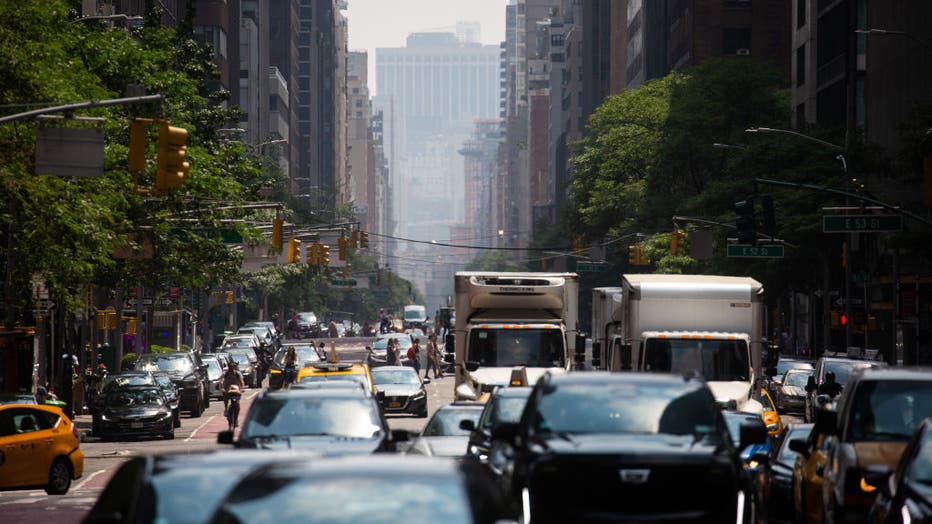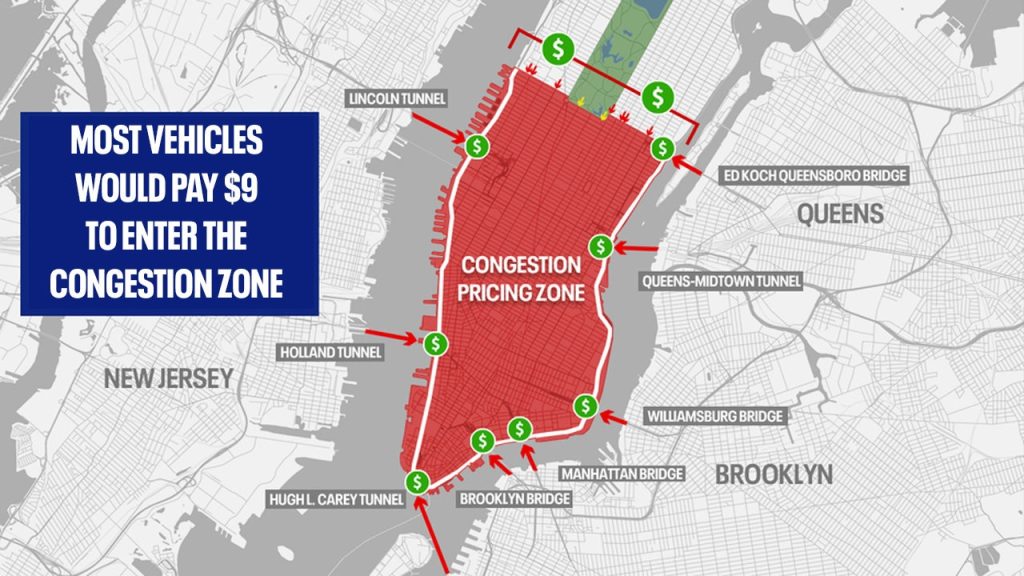New NYC congestion pricing plan: Details
Congestion pricing is officially back from the dead, with NYC once again set to become the first major metropolis in the United States to implement such a toll. FOX 5 NY’s Hayley Fixler has the details.
NEW YORK CITY – Congestion pricing is officially back from the dead, with NYC once again set to become the first major metropolis in the United States to implement such a toll.
JUMP TO: START DATE | MAP | TOLL COST | CONGESTION HOURS
New York Gov. Kathy Hochul abruptly halted the so-called congestion pricing plan just weeks before it was set to launch this summer. At the time, she said she worried it would cost motorists too much money.
Now, with President-elect Donald Trump headed for the White House, the Democrat is hurriedly restarting the tolling plan — hoping to get it in place before the Republican follows through on a promise to kill it for good during his first week in office.
How will NYC congestion pricing affect restaurants?
Businesses are worried that they’ll feel the negative impact of NYC congestion pricing, from the extra cost of deliveries to drivers being more reluctant to trek to Manhattan. FOX 5 NY’s Stephanie Bertini talks to restaurant owners in Hell’s Kitchen about their concerns.
Here’s everything drivers need to know about Hochul’s new congestion pricing, including the start date, a map, toll prices, toll hours and exemptions for drivers.
Congestion pricing is scheduled to begin on Sunday, Jan. 5, 2025.
Vehicles entering the Manhattan zone, which is local streets and avenues at or below 60 Street – near Central Park – will be charged a toll.
This map shows the proposed zone for New York City congestion pricing.
Drivers on the FDR and West Side Highway passing through the borough will not be charged.
Most vehicles would pay $9 to enter the congestion zone. It would come on top of the often-hefty tolls drivers pay to enter Manhattan via some bridges and tunnels.
The toll can still be raised, though Hochul said she does not want to do that for at least three years.
Will congestion pricing make NYC parking harder?
FOX 5 spoke with New Yorkers to hear their feelings about the potential return of congestion pricing, and concerns over how it could make parking in New York City even more difficult.
Depending on size, trucks would be charged $14.40 to $21.60 during peak hours.
Rideshare passengers using Uber and Lyft will see an extra $1.50 per-ride surcharge, while taxis will add a $0.75 per-ride fee.
Any passenger vehicles entering the zone through Manhattan tunnels during peak will receive a proposed discount of up to $3.
Drivers will see the highest tolls between 5 a.m. to 9 p.m. on weekdays and 9 a.m. to 9 p.m. on weekends. Tolls will be 75% cheaper outside of peak hours.
Hochul answers questions on timing of congestion pricing plan
The program, which would charge drivers a fee for entering Manhattan south of 60th St., aims to ease traffic in central Manhattan, reduce pollution and raise funds for public transit improvements.
How will the tolls be collected?
Most tolls will be collected through E-ZPass, thanks to gantries already set up at the congestion zone entry points.
Drivers without E-ZPass will be mailed a bill and forced to pay a higher rate.

Traffic in the Midtown neighborhood of New York, US, on Saturday, June 17, 2023. New York City’s congestion pricing plan for the central business district is expected to get final approval this month. (Michael Nagle/Bloomberg via Getty Images)
MTA congestion pricing exemptions
Some exceptions include a free pass for emergency vehicles, specialized city vehicles, and buses with regular public routes or city school contracts.
Vehicles carrying disabled people and certain low-income commuters also get a pass. Low-income drivers are eligible for discounts and tax credits.
What is congestion pricing?
Congestion pricing is aimed at reducing traffic and pollution while encouraging use of public transit. It has long existed in other cities around the globe, including London, Stockholm, Milan and Singapore, but not in the U.S.
How will the MTA benefit?
The money raised through congestion pricing will primarily be used to upgrade the city’s decaying subway system and buses.
It is unclear exactly how Hochul’s revised plan would address lost revenue for mass transit from lowering the toll amount. The original fee scheme was expected to generate up to $1 billion a year for subways, buses and commuter rail systems.
On Thursday, officials insisted the money raised from the lower fee will still be enough to allow the Metropolitan Transportation Authority to go ahead with its plans for fixes and upgrades — but it may take longer to generate the revenue to pay back the costs, they said.

